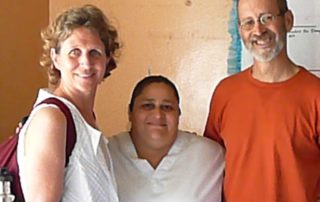A spectacularly sunny day, despite the downpour
The day of the 25th celebration started off grey — perfect weather to work on decorating Ruben Dario elementary school. When we went back to change and eat lunch, a downpour struck. But damp decorations didn't spoil the day.


